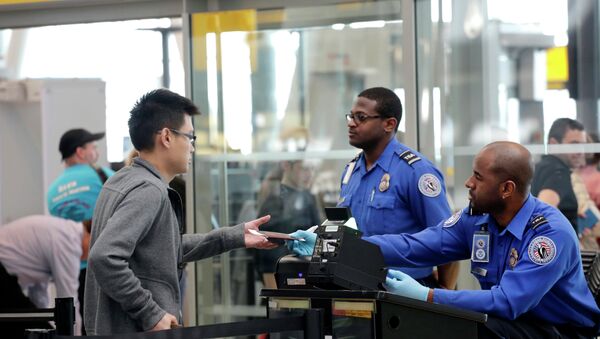The US Terrorist Screening Center (TSC) has named more than half a million people around the globe as "suspected or potential terrorists", despite relying on very little evidence from their sources. In many cases, the blacklist is compiled based on 'Screening of Passengers by Observation Techniques' by border staff who make assumptions which are often wildly inaccurate.
According to a Norwegian parliamentary report, the majority of its citizens who appear on the US Terrorist Screening Database are not even known to Norway's own intelligence service the NIS.
Healy, #US Terrorist Screening Center: Seven-hundred of Americans are considered too much of a risk to allow onto an airplane
— Balkan news (@NewsBalkan) October 2, 2012
The parliamentary committee that published the report is now calling on the US government to clarify how seemingly innocent Norwegians came to be put on the list, and on what evidence. The committee said:
"From our point of view, there are questions over the criteria for admission into the database as well as the end use of the information. In other words, the NIS is challenging the grounds for various admissions."
#truth “Of the 680,000 ppl in US Gov’s Terrorist Screening Database..+40% [have] ‘no recognized terrorist group affiliation’.”—The Intercept
— TRUTH_TELLER (@TruthTeller_21C) March 2, 2015
The head of the parliamentary commission Eldbjørg Løwer, told the newspaper Aftenposten: "This is not good. When US authorities submit individuals on their own initiative without the NIS having any say in it, we believe this is worrying."
Sleepwalking Into Terrorism
Many of the people on the database were listed simply because of their behaviour at border controls under the controversial Transportation Security Administration program, under which officers are told to look for "behavior indicators" to identify potential terrorists.
However, the 'Screening of Passengers by Observation Techniques' (SPOT) has been used to blacklist passengers stopped at border controls for no greater reason than they had a poor command of the English language, were simply tired or were in breach of their visa — with no hint of any association with terrorism.
GAO graphic of TSA behavior detection officer Screening of Passengers by Observation Techniques (SPOT) process pic.twitter.com/2wwBkCER9R
— Public Intelligence (@publicintel) November 14, 2013
Examples uncovered by The Inquirer include a passenger with poor English who was departing the US to go home as she could find no work and her visa had expired. She was referred to US Customs and Border Protection and found her way onto the terror blacklist.
Another passenger stopped under the SPOT program said he had been playing with his band late into the night and was very tired, despite which he was detained for possible inclusion on the terrorist list.
One question that remains though. Is TSA using qualified screeners for their "Screening of Passengers by Observation Techniques" program?
— Tim Trautmann (@Bringo) August 22, 2011
The Obama administration has come under fire for its controversial "Watchlisting Guidance" under which "reasonable suspicion" is a sufficient standard for determining whether someone is a possible threat.
The guidelines require neither "concrete facts" nor "irrefutable evidence" to designate an American or foreigner as a terrorist, allowing them to be put onto the terrorist database, as well as the no-fly list and the selectee list, which triggers enhanced screening at airports and border crossings.


